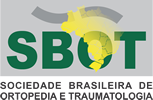Dados do Trabalho
Título do Caso / Title of Case
PRONATOR TERES AS A DONOR NERVE IN TETRAPLEGIA
Resumo / Abstract
Objectives: Describe the use of pronator teres motor branch as a donor nerve for achieving fingers flexion in a tetraplegic patient. Although it is used as a donor nerve in brachial plexus lower trunk lesions, it is the first description of its use in tetraplegia.
Methods: a 29 years-old tetraplegic patient had both upper limbs operated on one year after injury. Upper limb function was classified as group 4 ICSHT at both sides. We performed bilaterally transfer of the supinator motor branches to posterior interosseous nerve and transfer of one branch of the pronator teres to the anterior interosseous nerve. During the procedure, we identified on each side two branches destinated to the pronator teres muscle, and we used just one as a donor nerve. At the right side, we identified the branch to the flexor digitorum superficialis along with the AIN and it was included in the suture.
Results: Patient didn't lose the ability to pronate his forearms immediately after surgery. Five months after surgery, he presented some movements of his left hand (M2 finger extension). Eighteen months after the surgery, he has on the left side M4 fingers extension and M3 fingers flexion (FPL and FDP) and on right side M3 fingers extension and M2 fingers flexion (only FDS).
Conclusion: Pronator teres motor branch can be one option of donor nerve to achieve fingers flexion in tetraplegic patients.
Área
CASO CLÍNICO
Instituições
Hospital das Clínicas da Faculdade de Medicina da Universidade de São Paulo - São Paulo - Brasil
Autores
Renata Gregorio Paulos, Emygdio José Leomil de Paula, Fernando Vicente Pontes, Marcelo Rosa Rezende, Rames Mattar Jr
Patrocinador Master


Patrocinador Ouro












